publications
List of my selected publications. You can also check my ResearchGate or HSE working page
2025
-
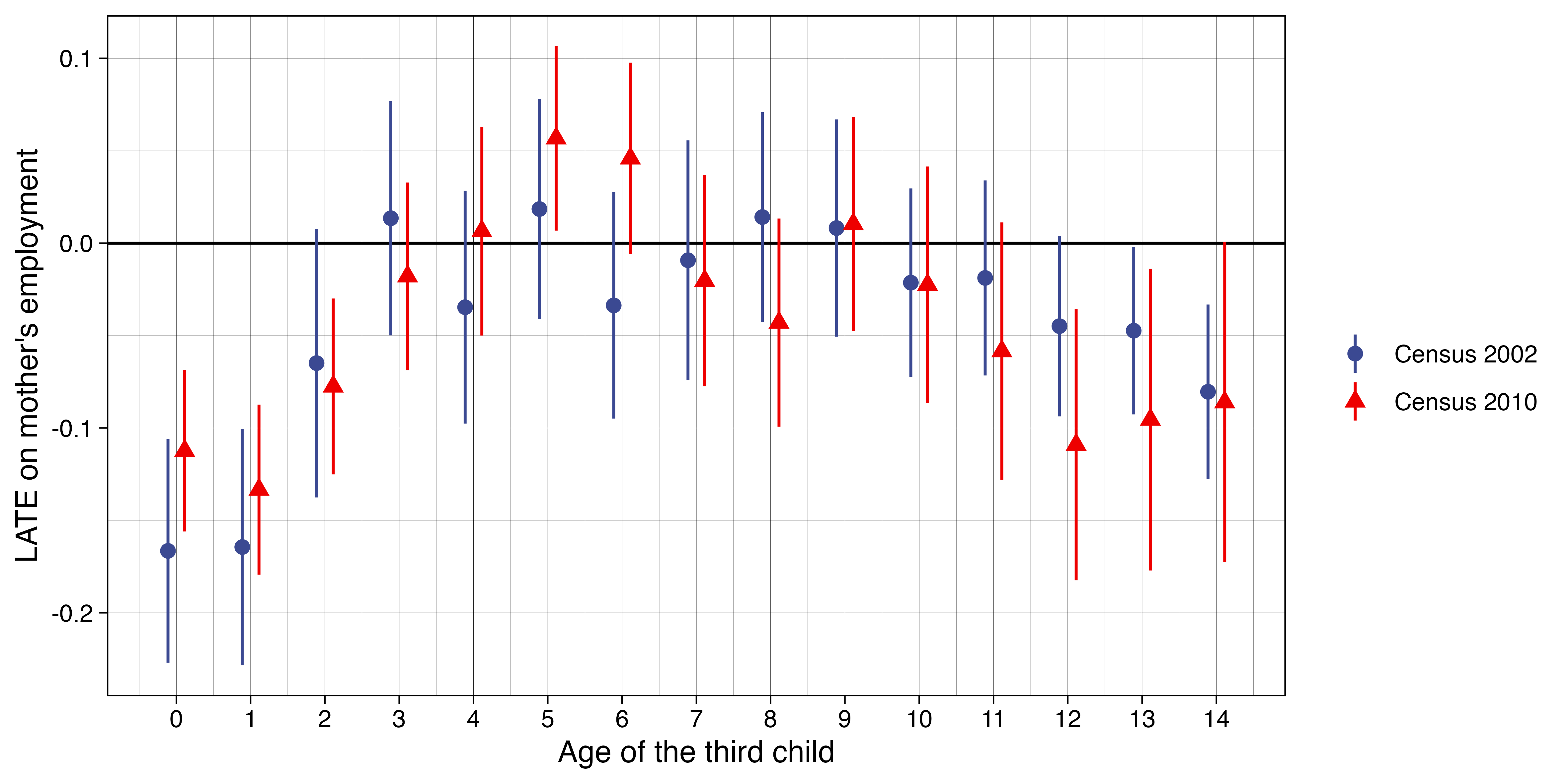 Parenthood Penalty in Russia: Evidence from Exogenous Variation in Family SizeVadim Ustyuzhanin2025
Parenthood Penalty in Russia: Evidence from Exogenous Variation in Family SizeVadim Ustyuzhanin2025The present study aimed to improve upon the existing correlational literature on the parenthood penalty in Russia. An instrumental variables approach based on sibling sex composition and multiple births was employed alongside difference-in-differences designs to analyze rich census and longitudinal datasets. To the best of the authors’ knowledge, this is the first study to provide causal estimates of the effect of fertility decisions on subsequent labor market outcomes for mothers and fathers in contemporary Russia. The study’s primary finding is that, in contrast to the approximately 10 percent long-term motherhood penalty observed in developed countries, the causal impact of childbearing on women’s employment in Russia is most significant in the first year after birth, reducing employment by around 15 percent. This penalty then rapidly declines to a modest 3 percent once children reach school age. The analysis indicates an absence of a systematic fatherhood penalty in terms of employment, although a modest increase in labor supply is observed.
-
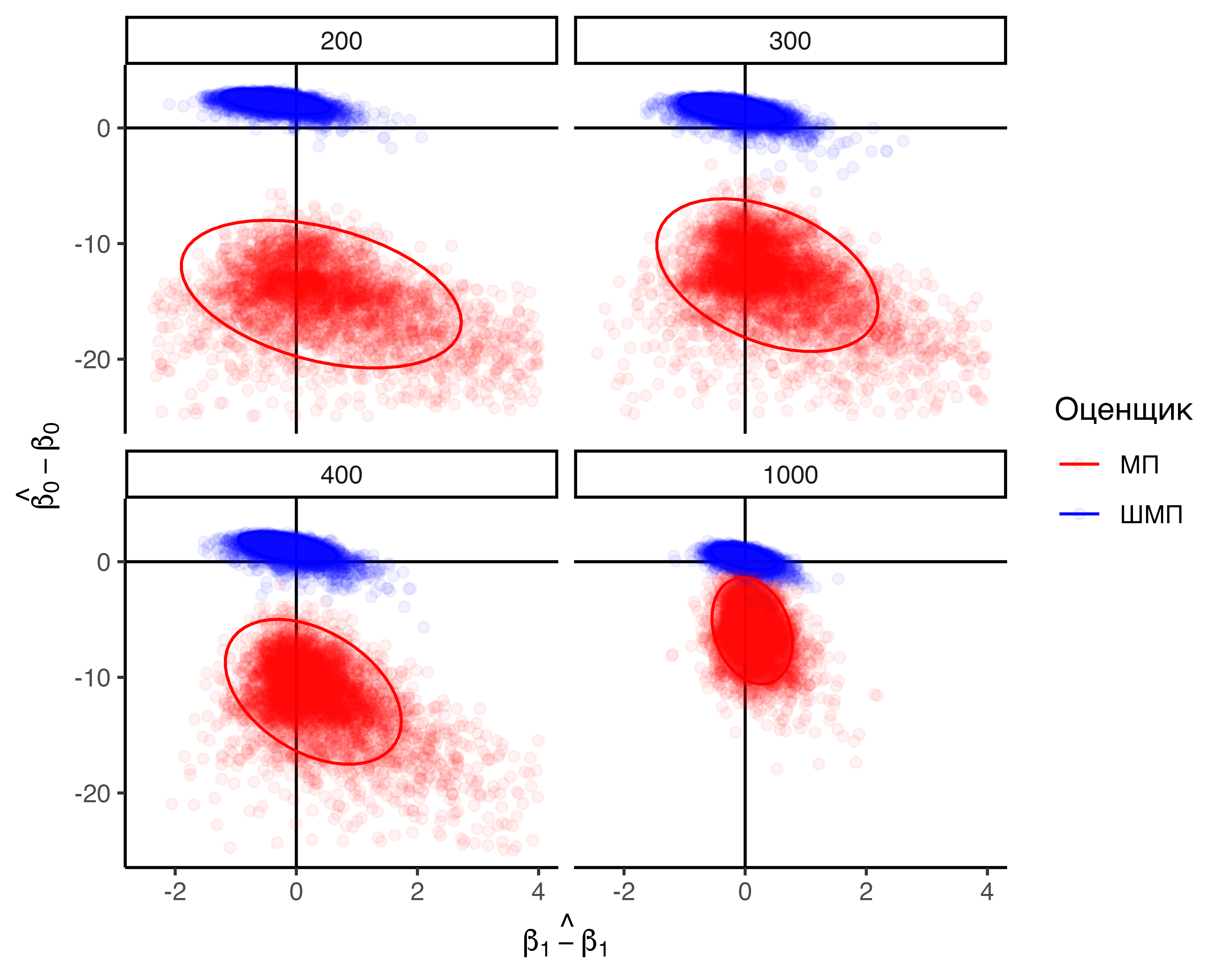 Rare events analysis: logistic regression and alternatives (forthcoming)V. UstyuzhaninPolitical science (RU), 2025
Rare events analysis: logistic regression and alternatives (forthcoming)V. UstyuzhaninPolitical science (RU), 2025The study of revolutions has long been a topic of interest to sociologists and political scientists. However, it is only in recent years that authors have begun to employ quantitative methods with greater regularity in their analysis of these events. In such studies, the dependent variable, namely revolutions or their characteristics, frequently represent a “rare event”. The most commonly used method, logistic regression, has been demonstrated by some authors to yield biased results when analysing such type of data. However, no unified standard for analysis has been established. Furthermore, authors frequently encounter additional challenges, including the analysis of panel data and the use of small sample sizes. The reliability of classical logistic regression in addressing these issues has yet to be evaluated, despite the fact that the majority of contemporary authors frequently encounter these challenges. The present study aimed to assess the bias of results produced by classical logistic regression when used in different research designs with rare events, specifically cross-sectional and panel data. Furthermore, we put forward an alternative approach, namely penalized logistic regression. In the case of cross-sectional data, the combination of a small sample size and a rare event leads to a significant bias in classical logistic regression. This result shows that researchers face the challenge of obtaining not only an inaccurate estimate of the effect but also making a false judgement about the direction of the relationship. In contrast, penalized logistic regression produces almost unbiased estimates regardless of the rarity of the event or the size of the sample. In the context of panel data, the application of classical logistic regression is not viable in scenarios characterized by a limited sample size and infrequent events. In contrast, our findings suggest that penalized logistic regression is a viable alternative for analyzing panel data, whereas conditional logistic regression is currently the only option recommended in the professional literature.
2024
-
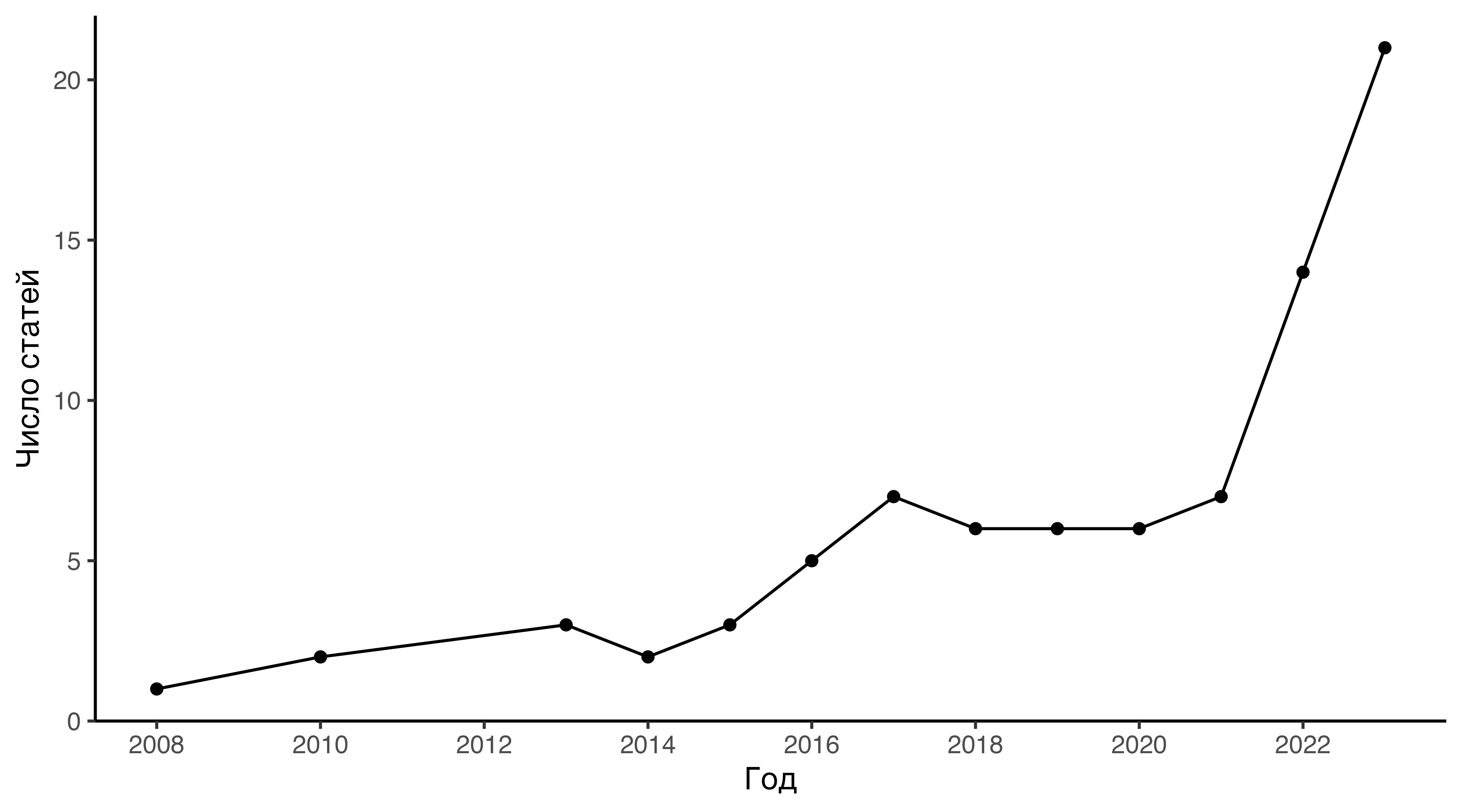 The Fifth Generation of Revolution Studies. Part II: A Systematic Review of Substantive Findings (Revolution Causes, Forms, and Waves)A. Korotayev , V. Ustyuzhanin, L. Grinin , and E. FainCritical Sociology, 2024
The Fifth Generation of Revolution Studies. Part II: A Systematic Review of Substantive Findings (Revolution Causes, Forms, and Waves)A. Korotayev , V. Ustyuzhanin, L. Grinin , and E. FainCritical Sociology, 2024The article is the first part of our systematic review of substantive findings of fifth-generation revolution studies, building on the examination of the emergence and characteristics of this generation contained in the first article in the series. Our systematic review is divided into two parts. This first part specifically considers the following areas of research explored by fifth-generation scholars: First, we examine the factors and causes of armed and unarmed revolutionary events. These include economic, political, socio-demographic, and other factors, the majority of which exert a differential effect on the probability of armed versus unarmed revolutionary destabilization. Second, we examine the factors that influence the decision of participants to adopt a violent or non-violent tactic in revolutionary action. This analysis considers the structural factors, which are dependent on external conditions, and the agent factors, which are dependent on the characteristics of revolutionary movements. Third, we analyze the emergence of concepts such as coupvolutions and analogues of revolutions within the context of the fifth generation of the theory of revolution. Finally, we examine the phenomenon of the spread of revolutionary events, which is also known as revolutionary waves or the diffusion of revolutions, and the mechanisms that drive it.
-
 Non-beverage alcohol consumption in Russia: new evidence from Jewish Autonomous OblastA. Korotayev , V. Ustyuzhanin, Y. Ivanov , and L. IssaevAlcohol and Alcoholism, 2024
Non-beverage alcohol consumption in Russia: new evidence from Jewish Autonomous OblastA. Korotayev , V. Ustyuzhanin, Y. Ivanov , and L. IssaevAlcohol and Alcoholism, 2024(1) Introduction. Previous studies in Izhevsk, Novosibirsk, and Kazan have found that non-beverage alcohol is a large part of alcohol consumption in Russia. Whereas those places are relatively high-income cities, there are no studies about such a problem in low-income regions of Russia. The aim of this study is to investigate correlates and factors associated with non-beverage alcohol consumption in eastern regions of Russia, e.g. the Jewish Autonomous Oblast and to assess effectiveness of implementing Russian policies to restrict consumption of non-beverage alcohol. (2) Materials and methods. A survey of adults in the Jewish Autonomous Oblast of Russia was performed on workdays to assess non-beverage drinking patterns in summer 2022. The questionnaire included questions about socio-demographic status and alcohol use, including non-beverage alcohol consumption and drinking patterns. We use logistic regression to identify risk factors of consuming non-beverages. (3) Results. First, ~30% of individuals suffering from alcohol problems drink non-beverage alcohol. Second, those who regularly consume non-beverage alcohol compared with those who chronically drink legal strong alcohol are on average more likely to experience the negative effects of alcohol consumption. Third, income and marriage are the main factors negatively associated with surrogate alcohol consumption. Besides, age shows a curvilinear relationship with that. (4) Conclusions. We suggest that a modified anti-surrogate policy to increase the minimum price of pharmacy alcohol and to enforce restrictions on the sale of non-beverage alcohol is needed in Russia. Such measures could prevent an increase in non-beverage alcohol consumption in Russia against the backdrop of declining real incomes of the population.
-
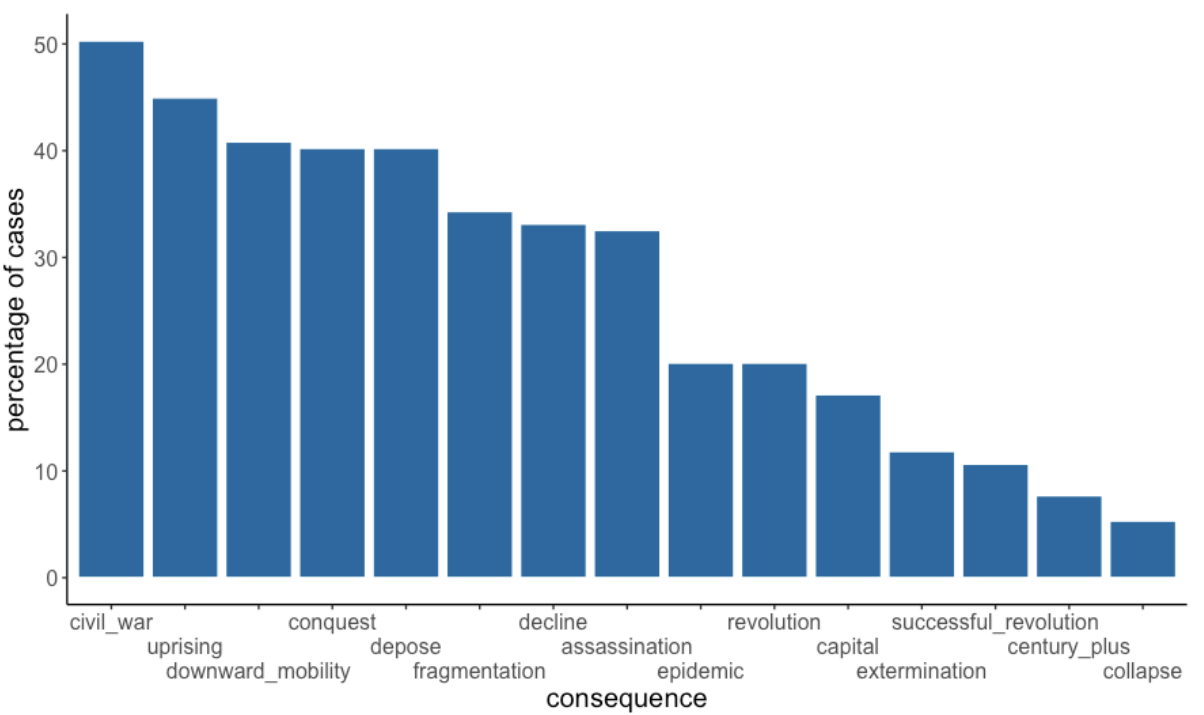 All Crises are Unhappy in their Own Way: The role of societal instability in shaping the pastD. Hoyer , D. Holder , J. Bennett , P. François , and 12 more authors2024
All Crises are Unhappy in their Own Way: The role of societal instability in shaping the pastD. Hoyer , D. Holder , J. Bennett , P. François , and 12 more authors2024Societal "crises" are periods of turmoil and destabilization in socio-cultural, political, economic, and other systems, often accompanied by varying amounts of violence and sometimes significant changes in social structure. The extensive literature analyzing societal crises has concentrated on relatively few historical examples (large-scale events such the fall of the Roman Empire or the French and Russian Revolutions) emphasizing different aspects of these events as potential causes or consistent effects. To investigate crises and prior approaches to explaining them, and to avoid a potential small-sample size bias present in several previous studies, we sought to uniformly characterize a substantial collection of historical crises, spanning millennia, from the prehistoric to post-industrial, and afflicting a wide range of polities in diverse global regions; the Crisis Database (CrisisDB). Here, we describe this dataset which comprises 168 crises suggested by historians and characterized by a number of significant ’consequences’ (such as civil war, epidemics, or loss of population) including also institutional and cultural reforms (for example improved sufferance or constitutional changes) that might occur during and immediately following the crisis period. Our analyses show that the consequences experienced by each crisis is highly variable. The outcomes themselves are uncorrelated with one another and, overall, the set of consequences is largely unpredictable when compared to other large-scale properties of society suggested by previous scholars such as its territorial size, religion, administrative size, or historical recency. We conclude that there is no ‘typical’ societal crisis of the past, but crisis situations can take a variety of different directions. We offer some suggestions on the forces that might drive these varying consequences for exploration in future work.
-
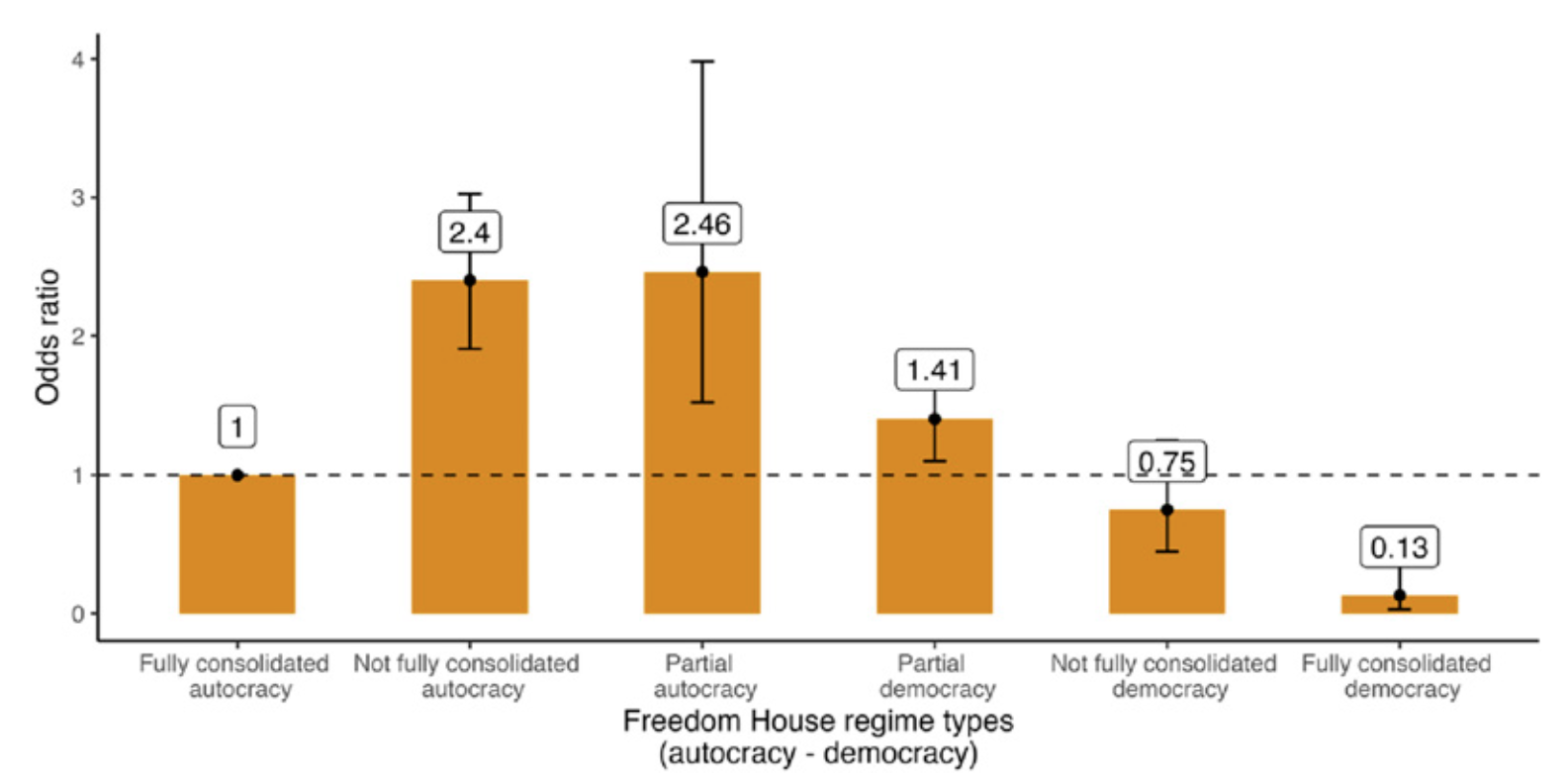 Revolution and Democracy in the Twenty-First CenturyA. Korotayev , A. Zdanov , L. Grinin , and V. UstyuzhaninCross-Cultural Research, 2024
Revolution and Democracy in the Twenty-First CenturyA. Korotayev , A. Zdanov , L. Grinin , and V. UstyuzhaninCross-Cultural Research, 2024In this article, we analyze an inverted U-shaped relationship between the type of regime (on the autocracy-democracy scale) and the risks of revolutionary destabilization. Anocracies tend to be more vulnerable to revolutionary destabilization than full autocracies or full (consolidated) democracies. We also point to a strong positive association between the weakening of autocracies and the risks of revolutionary destabilization that exist among full autocracies. In addition, full autocracies moving towards democracy and transitioning to partial autocratic rule are at increased risk of revolutionary destabilization, which explains why the current global spread of democracy is associated with an upswing rather than a downswing in revolutionary activity. Finally, strong forms of revolutionary destabilization are quite possible in cases of deconsolidation of consolidated democracy, which additionally suggests that the era of revolutions will not end in the foreseeable future. Thus, we propose a general theory on the effect of regime type on revolutionary destabilization and address inconsistencies among various studies regarding the impact of the regime on revolutionary instability. The conducted research also allows us to contribute to the answer to the question posed by many researchers of revolutions at the end of the last century– will the era of revolutions end with the global spread of democracy? Our analysis suggests that if this happens someday, it will not be in any foreseeable future.
-
 Wealth and Rebellion: A Dualistic Perspective on Income Level and RevolutionsV. Ustyuzhanin2024
Wealth and Rebellion: A Dualistic Perspective on Income Level and RevolutionsV. Ustyuzhanin2024In the field of civil war studies, there is now a consensus that the risk of war decreases as average income increases. Nevertheless, such consensus has not been reached in the field of unarmed revolutions, which dominate the revolutionary process of our time. This can be explained by the fact that the researchers assumed a linear effect of income level on the risk of unarmed revolutions’ onset. In contrast, this paper proposes a curvilinear framework that challenges this conventional assumption. It is demonstrated that two opposing trends can be identified within the context of economic development. On the one hand, economic development increases the resources required by the state to prevent illegal displacement and makes revolt costly for potential rebels. Conversely, it develops infrastructure and resources for civil resistance, which gives rise to the politicization of a society and the demand for political rights and participation. Utilizing two independent datasets to define revolutions and employing distinct methodological strategies, I have identified robust support for the inverted "U-shaped" relationship between income level and the risk of unarmed revolutions.
-
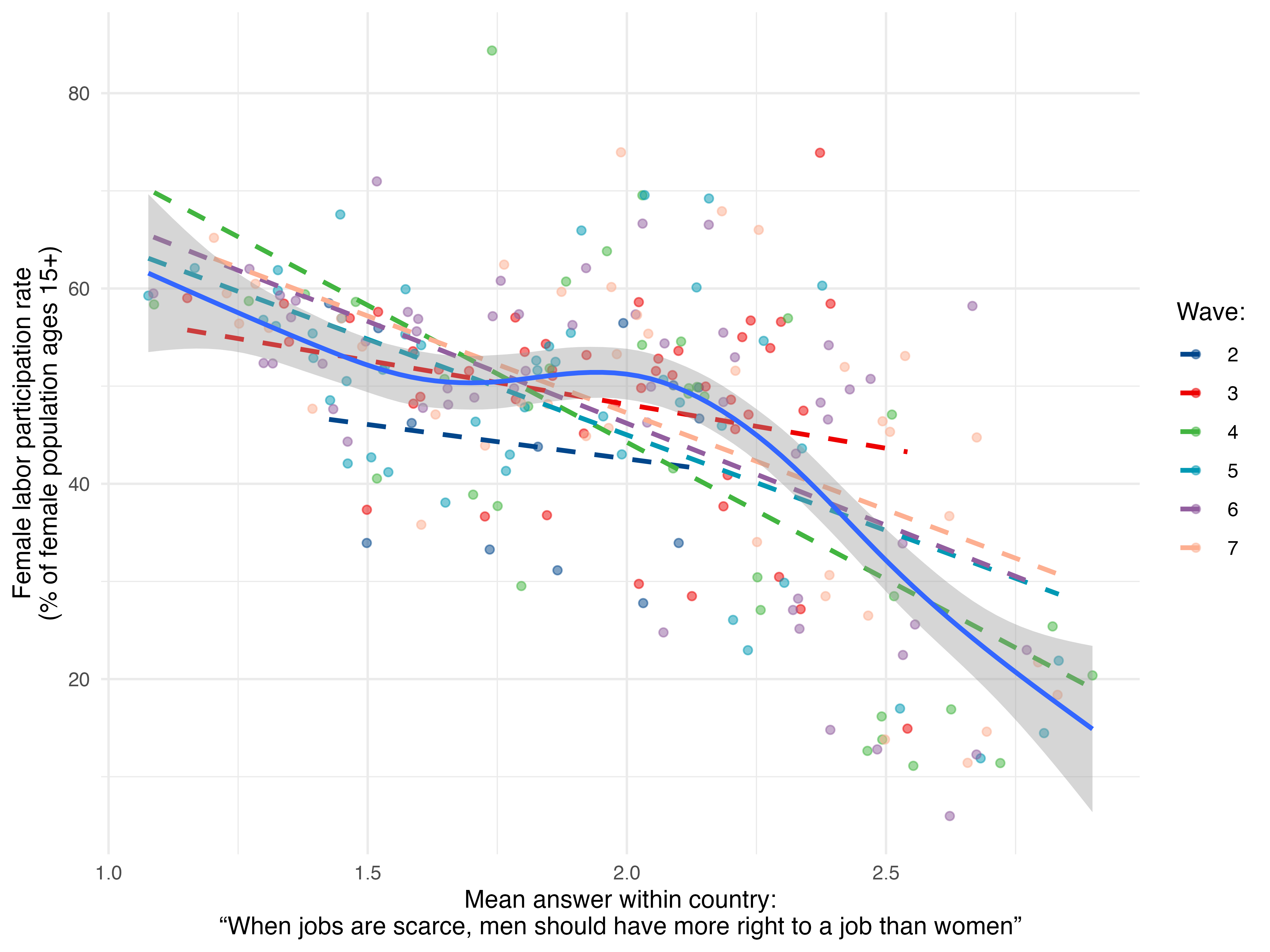 When Jobs are Scarce. The Attitudes to Female Labor in Islamic and Arab Cultures in Comparative PerspectiveA. Korotayev , K. Meshcherina , and V. UstyuzhaninComparative Sociology, 2024
When Jobs are Scarce. The Attitudes to Female Labor in Islamic and Arab Cultures in Comparative PerspectiveA. Korotayev , K. Meshcherina , and V. UstyuzhaninComparative Sociology, 2024We examine the possible influence of Islam on the attitudes to female labor force participation reflected in the answers to the World Values Survey (WVS) question: “When jobs are scarce, should men have more right to a job than women?”. We expect that in Islamic ( Muslim-majority) countries respondents have more positive attitudes to the statement than in non-Islamic ones. We test a hypothesis that the higher the percentage of Muslims in a given country, the more likely the respondents agree with this statement. A formal test has shown that the correlation is in the predicted direction and it is statistically significant and rather strong. Meanwhile, tests show that respondents in Arab countries demonstrate especially strong support for this statement (significantly stronger than in the non-Arab Muslim-majority countries). Based on this, we try to discuss possible determinants of such attitudes. Our further tests have revealed that a particularly high level of support for the statement is observed also in those non-Arab countries that experienced a particularly strong Arab influence. Our hypotheses suggest that these countries can be identified with the territories that were included in the past into the Umayyad Caliphate and might have been especially influenced by non-Islamic elements of the Arab culture that are not directly connected with Islam and be a possible determinant of such attitude.
2023
-
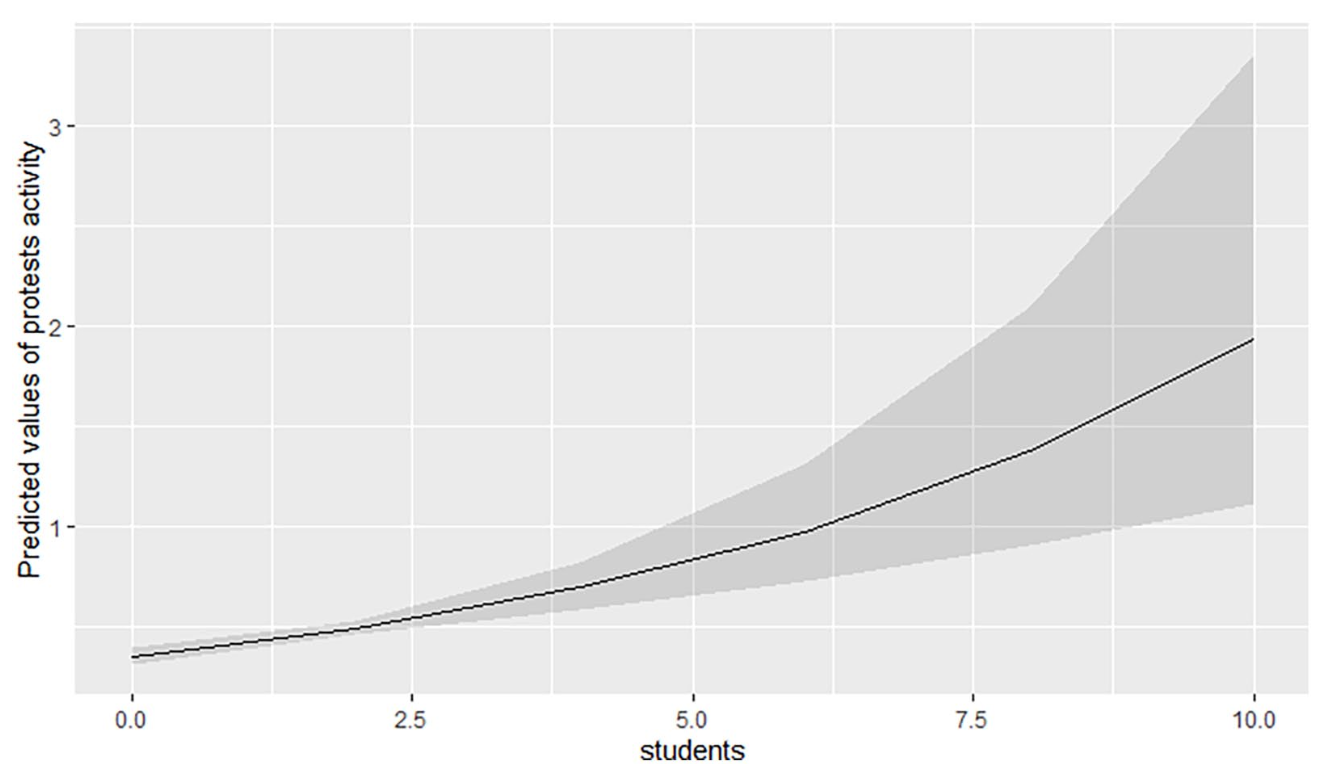 Students and protests: A quantitative cross-national analysisV. Ustyuzhanin, P. Sawyer , and A. KorotayevInternational Journal of Comparative Sociology, 2023
Students and protests: A quantitative cross-national analysisV. Ustyuzhanin, P. Sawyer , and A. KorotayevInternational Journal of Comparative Sociology, 2023Previous studies have found a positive relationship between the youth and the educated with protest number, but the form that these protests take needs further research. We argue that students are a unique group, acting neither as an educated nor a young population, and three possible mechanisms push students toward non-violent rather than violent forms of protest. By promoting values of tolerance, higher levels of human capital, and social mobility, education serves as a factor that pacifies destructive tendencies in protest movements. At the same time, universities are a platform for cooperation, and the large amounts of free time and energy make the costs of participating in protests for students minimal compared with other groups. Using a negative binomial regression and a rare events logistic regression, we find that the proportion of students is a strong and consistently significant predictor of the number of nonviolent demonstrations. However, the share of students in the total population does not turn out to be significantly associated with violent protests/armed uprisings.
-
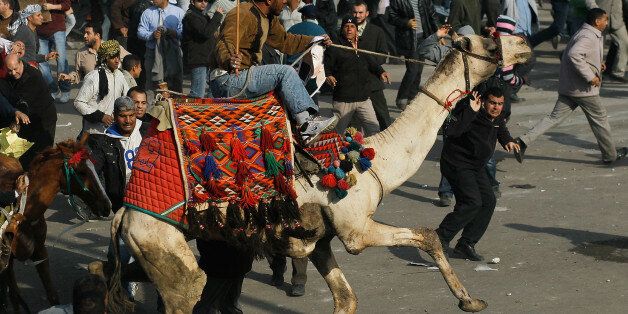 Revolutionary events of the 21st century: a preliminary quantitative analysisJ. A. Goldstone , L. Grinin , V. Ustyuzhanin, and A. KorotaevPolis. Political Studies, 2023
Revolutionary events of the 21st century: a preliminary quantitative analysisJ. A. Goldstone , L. Grinin , V. Ustyuzhanin, and A. KorotaevPolis. Political Studies, 2023The authors study important aspects of the revolutionary process of the 21st century. The reasons why the revolutionary process of the beginning of the 21st century is going on quite rapidly are considered, as well as forecasts promising that it will be very active in the future; revolutionary trends are analyzed, including a particularly alarming one - the growth in the number of radical Islamist revolutionary uprisings. All of the above is illustrated by a statistical analysis of various types of revolutions. As far as the authors know, there are practically no quantitative studies of the revolutions of the last decades. Meanwhile, this analysis convincingly shows the growing importance of the African countries in the revolutionary process in the World System, the role of which will continue to increase in the future due to the rapid growth of the population and the strengthening of statehood in the region.
-
 Education and Revolutions: Why do Revolutionary Uprisings Take Violent or Nonviolent Forms?V. Ustyuzhanin, and A. KorotayevCross-Cultural Research, 2023
Education and Revolutions: Why do Revolutionary Uprisings Take Violent or Nonviolent Forms?V. Ustyuzhanin, and A. KorotayevCross-Cultural Research, 2023Is there a relationship between education and the type of revolutionary action – violent or nonviolent? Past studies found a positive relationship between the education and nonviolence, but the influence that education produces on the form that revolution takes has not yet been explored. We show several possible mechanisms that push the educated population to choose nonviolent tactic: (1) education changes people’s preferences toward peaceful solutions and increases support for civil liberties; (2) it enhances human capital that makes it feasible to use unarmed tactics successfully and (3) it increases the relative costs of engaging in armed action. Thus, it is reasonable to assume that the higher education in a country, the higher the probability that revolution will be nonviolent. This paper examines it at a cross-national level with an analysis of 470 NAVCO ‘maximalist campaigns’ and 265 revolutionary events recorded between 1950 and 2020. Overall, we find robust evidence that the higher the level of education in a country, the lower chance that the revolution there would take a violent/armed form.
-
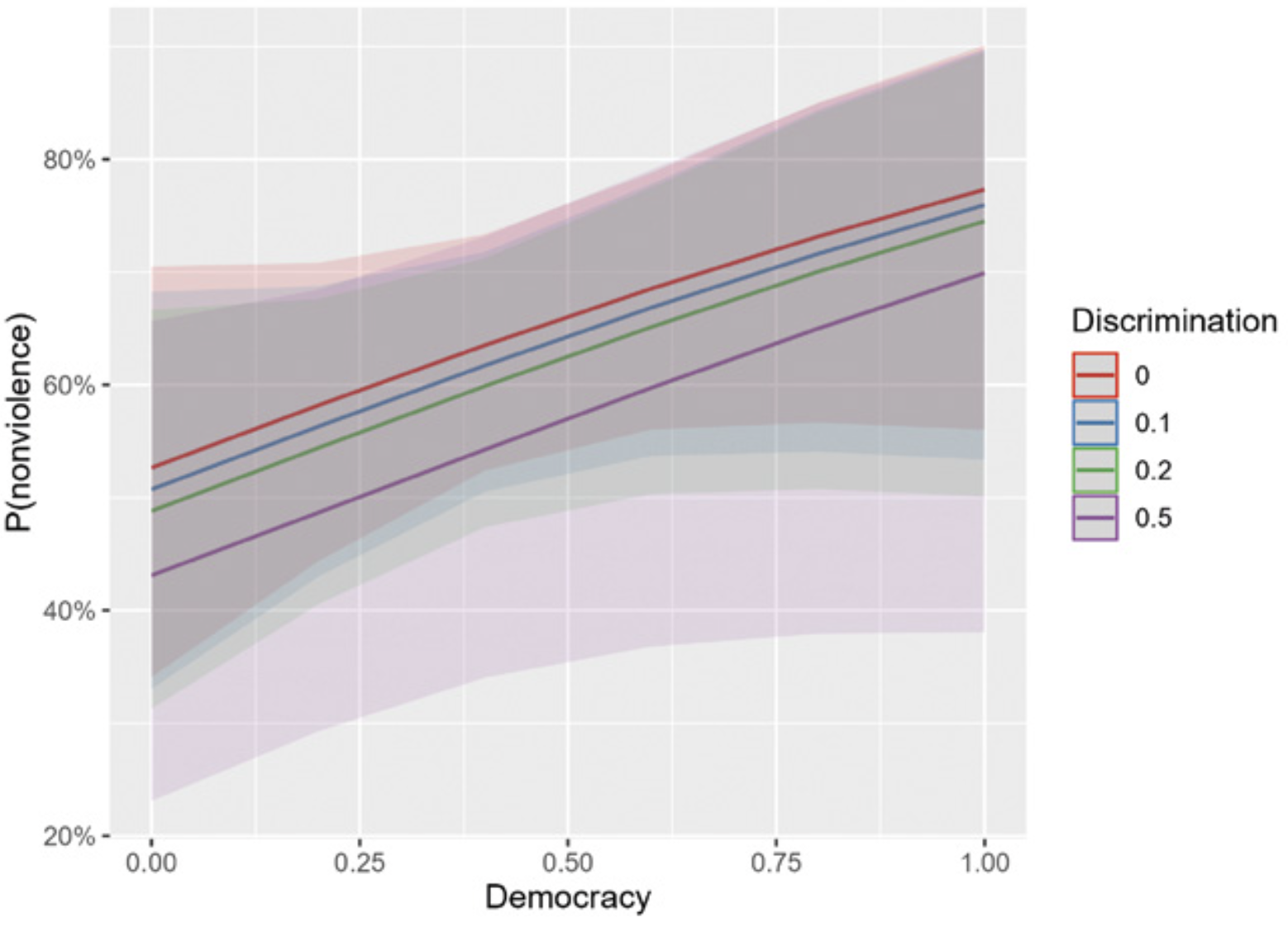 Revolutions and Democracy: Can Democracies Prevent Revolutionary Armed Violence?V. Ustyuzhanin, and A. KorotayevComparative Sociology, 2023
Revolutions and Democracy: Can Democracies Prevent Revolutionary Armed Violence?V. Ustyuzhanin, and A. KorotayevComparative Sociology, 2023In recent years, the question of what form a revolutionary uprising will take – armed or unarmed – has been raised more often. This is because, as shown by numerous studies, revolutionary nonviolence can explain why an uprising fails or succeeds to lead to democracy. In the recent decades the likelihood of revolution being nonviolent appears to have significantly increased, but it is still not clear why this tendency is observed. Moreover, there are only a few quantitative cross-national studies on this topic, in which the authors tried to explain the apparent pattern. However, none of them considered political factors separately. This article tests the hypothesis that a country’s level of democracy can inhibit the armed revolutionary violence. By applying logistic regression to the NAVCO database, the authors analyze more than 400 revolutionary episodes and conclude that, in general, the more democratic the political system, the more likely the revolution take an unarmed form. Nevertheless, various revolutionary events could be of a rather different nature, and it is further shown that the level of democracy matters only for sociopolitical revolutions, while for ethno-separatist revolutions it does not play a significant role.
-
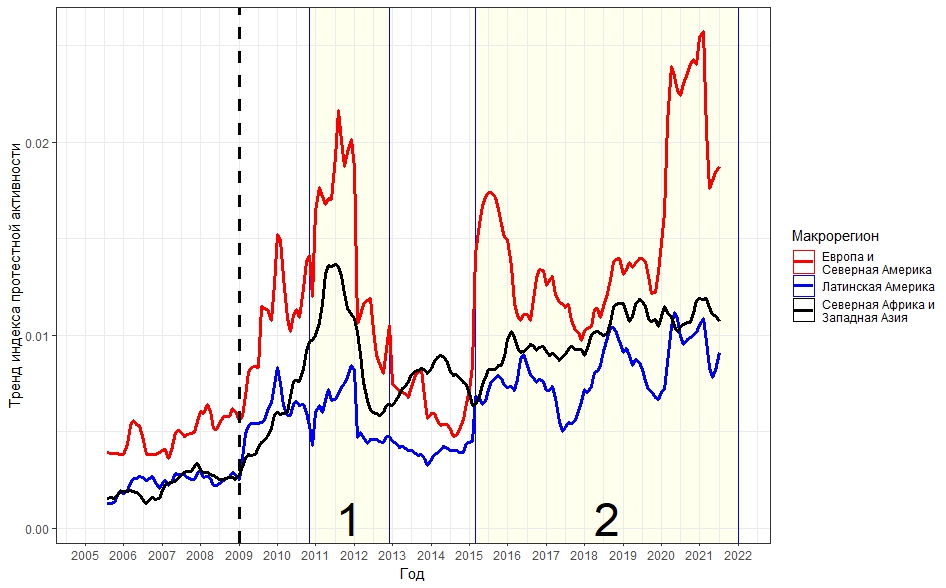 Protest Dynamics in the Global Context.V. Ustyuzhanin, I. Medvedev , A. Ufimtsev , I. Sumernikov , and 1 more authorJournal of Globalization Studies, 2023
Protest Dynamics in the Global Context.V. Ustyuzhanin, I. Medvedev , A. Ufimtsev , I. Sumernikov , and 1 more authorJournal of Globalization Studies, 2023At a time of growing socio-political instability, the analysis of the numerous protests taking place around the world is becoming of the utmost interest. This article focuses on the dynamics of non-violent destabilization processes, which are becoming increasingly dominant even in developing countries and less developed regions with many socio-economic and political problems. The authors provide empirical data on non-violent protest activity based on the Global Protest Database, which consists of a huge number of media in nine languages and is presented in the Google News aggregator. With a list of more than 520,000 articles in nine languages from January 2005 to December 2021, the authors standardized all the data on the number of news sources per month, and then used the principal component method to aggregate the information into a variable that can be considered as an index of protest activity. The observed value of the index for each month and trends are presented in the article. This study was supported by strategic project ‘National Centre for Sci-ence, Technology and Socio-Economic Foresight’ of Higher School of Eco-nomics integrated development programme.
-
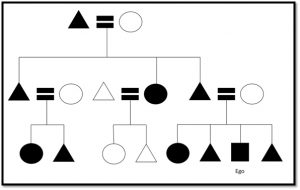 Love, Marriage, Family Organization and the Puzzle of Neolocality in Non-Industrial Societies: A Cross-Cultural StudyV. De Munck , A. Korotayev , and V. UstyuzhaninCross-Cultural Research, 2023
Love, Marriage, Family Organization and the Puzzle of Neolocality in Non-Industrial Societies: A Cross-Cultural StudyV. De Munck , A. Korotayev , and V. UstyuzhaninCross-Cultural Research, 2023In this paper we answer the question, “What features of family organization promote romantic love as a basis for marriage in non-industrial societies?” We also directly address Rosenblatt’s findings and those of a follow up study by Lee and Stone that, counterintuitively, show non-neolocality rather than neolocality to be correlated with love as a basis for marriage. Ember and Levinson and even Lee and Stone have thought this finding to be puzzling. We have recoded Rosenblatt’s original measures on a four-point (0–3) scale: no love, low love, medium love and high love and coded additional cases using ethnographic data taken from eHRAF World Cultures (Human Relations Area Files. https://ehrafworldcultures.yale.edu/). Using these data sets we obtained 109 cultures and tested how post marital residence and marriage types affected the importance of romantic love as a basis for marriage using multiple ordinal regression. Nuclear family organization by itself (including polygynous families) is not significantly correlated with our dependent variable.
2022
-
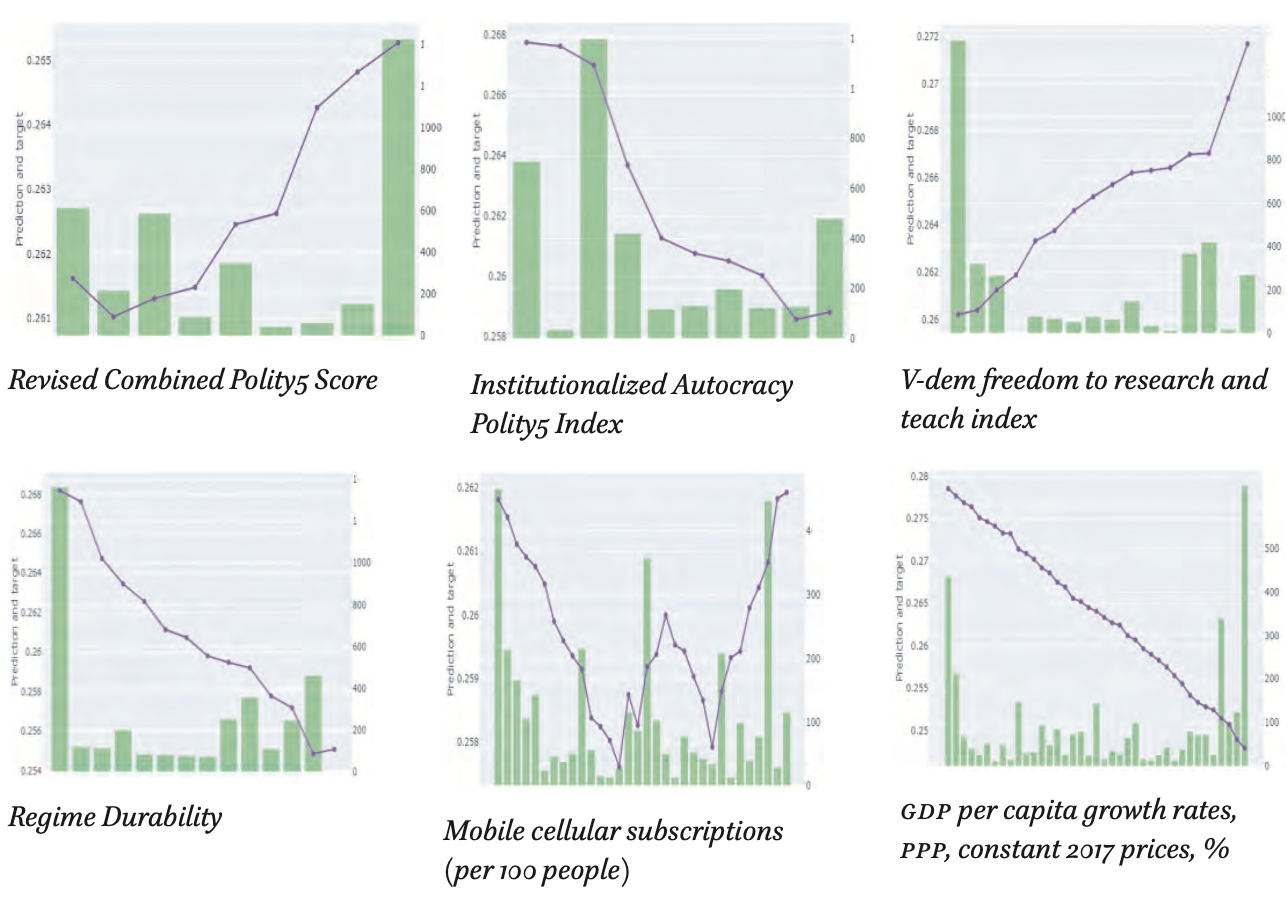 Machine Learning for Ranking Factors of Global and Regional Protest Destabilization with a Special Focus on Afrasian Instability MacrozoneI. Medvedev , V. Ustyuzhanin, J. Zinkina , and A. KorotayevComparative Sociology, 2022
Machine Learning for Ranking Factors of Global and Regional Protest Destabilization with a Special Focus on Afrasian Instability MacrozoneI. Medvedev , V. Ustyuzhanin, J. Zinkina , and A. KorotayevComparative Sociology, 2022 -
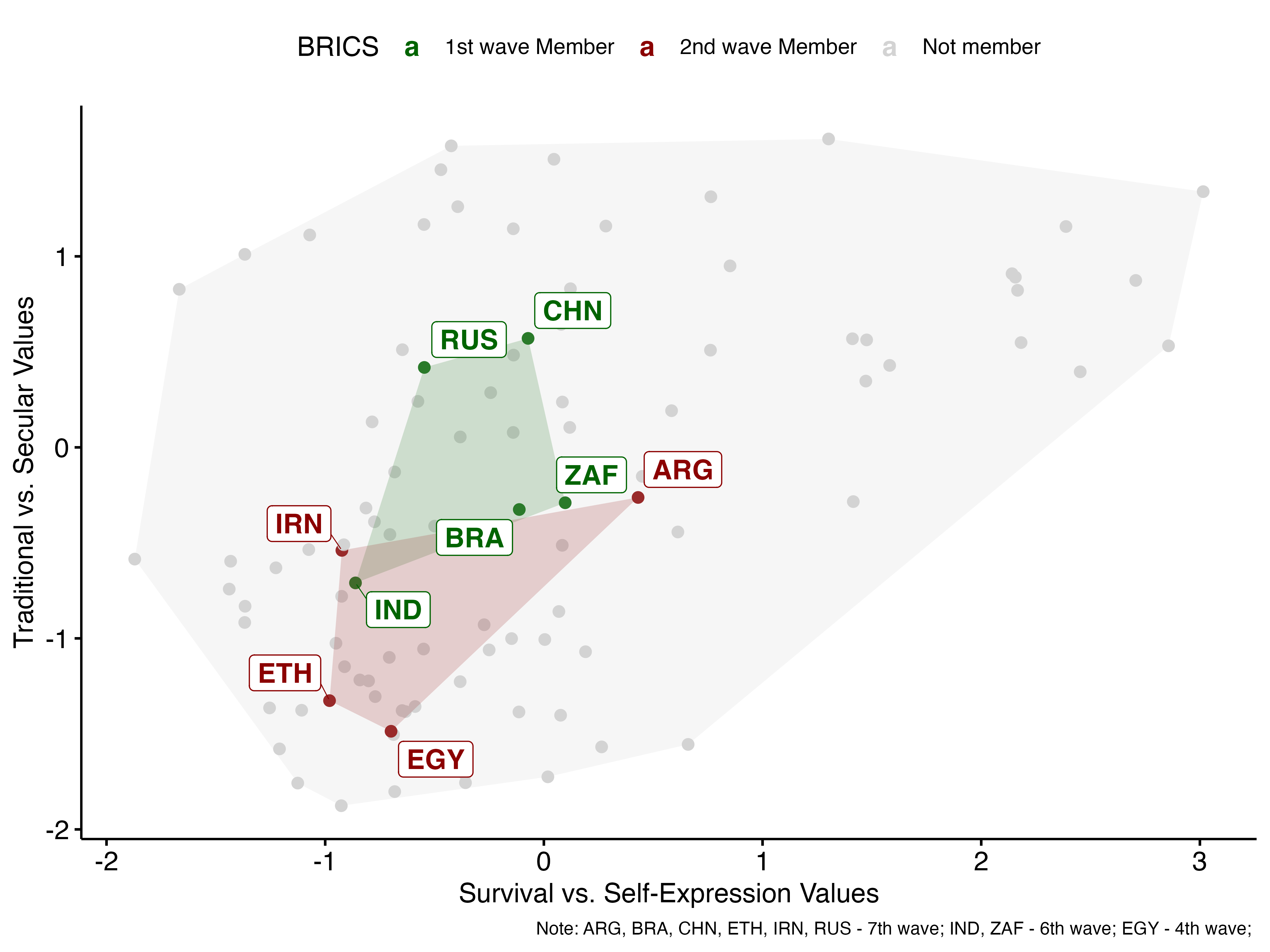 Social Macroevolution and Changes in the Human Value Systems. How has Modernization Affected Human Values?J. Zinkina , V. Ustyuzhanin, and S. ShulginSocial Evolution & History, 2022
Social Macroevolution and Changes in the Human Value Systems. How has Modernization Affected Human Values?J. Zinkina , V. Ustyuzhanin, and S. ShulginSocial Evolution & History, 2022 -
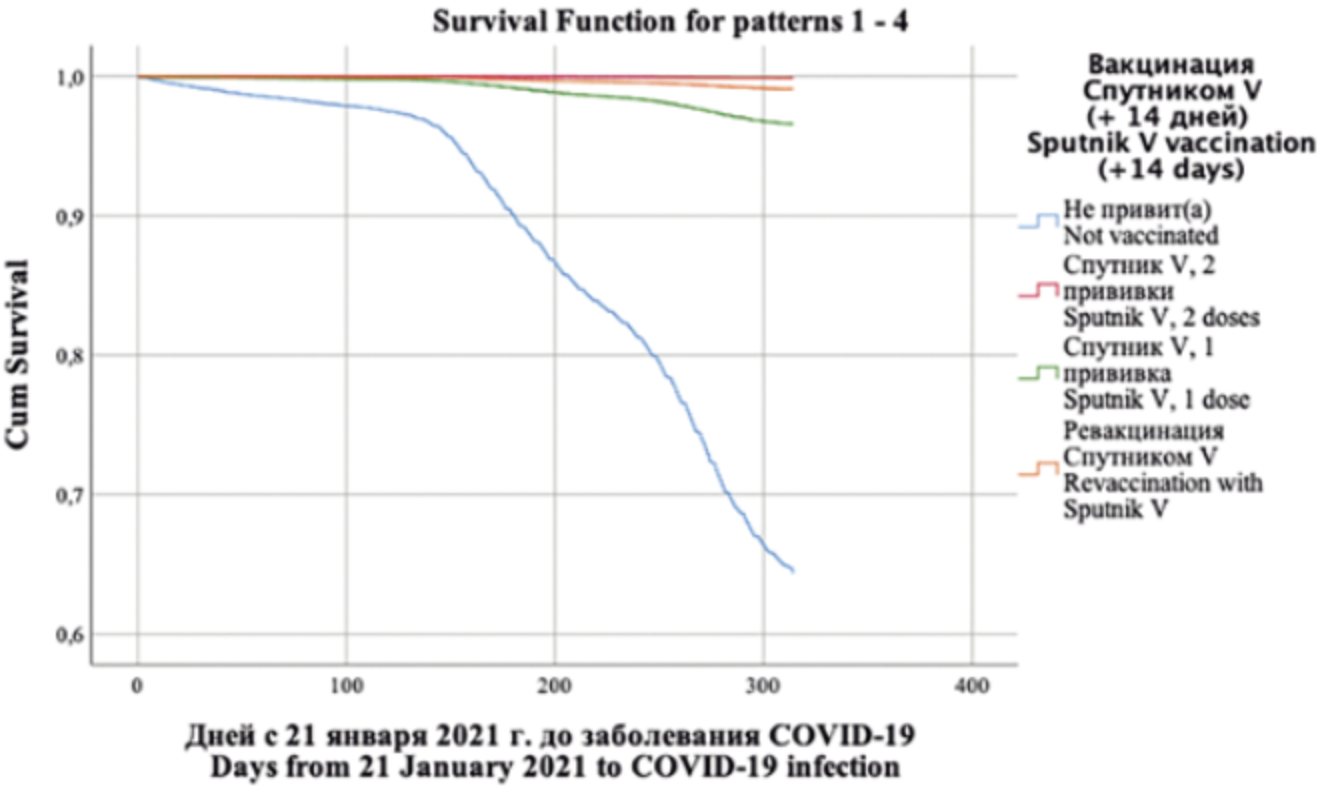 Evaluation of the Effectiveness of Vaccination of Russian Railways employeesN. A. Kostenko , E. A. Jidkova , A. A. Goriaev , I. V. Shangin , and 4 more authorsEpidemiology and Vaccinal Prevention, 2022
Evaluation of the Effectiveness of Vaccination of Russian Railways employeesN. A. Kostenko , E. A. Jidkova , A. A. Goriaev , I. V. Shangin , and 4 more authorsEpidemiology and Vaccinal Prevention, 2022Relevance . The effectiveness of vaccination of the working population against COVID-19 in the Russian background has not been studied enough. Aim . To evaluate the effectiveness of vaccination of the working population with Gam-COVID-Vak (Sputnik V) in the Russian Railways as an example. Materials & Methods .The effectiveness of vaccination with Sputnik V among employees of Russian Railways in the period from January 21 to November 31, 2021 was performed with the Cox regression method. Results . The effectiveness of Sputnik V against COVID-19 infection with was 97.8% (95% CI 97.8–97.9%) for two doses, 91.9% (95% CI 91.6–92.2%) for a single dose, and 97.9% (95% CI 97.6–98.1%) for revaccination, all after socio-demographic factors adjusted. The effectiveness of vaccination against COVID-19 with hospitalization was 97.5% for two doses of Sputnik V (95% CI 97.1–97.9%), 86.1% (95% CI 83.7–88.1%) for a single dose, and 98.2% (95% CI 96.3–99.2%) for revaccination. The effectiveness against lethal COVID-19 was 95.2% (95% CI 93.1–96.6%) for two doses of Sputnik V and 94.8% (95% CI 89–97.6%) for one dose. The high efficiency of vaccination could be associated with a fairly young age composition of the employees of the Russian Railways. Conclusions . The study showed the high effectiveness of vaccination with Sputnik V against COVID-19 among the working population.